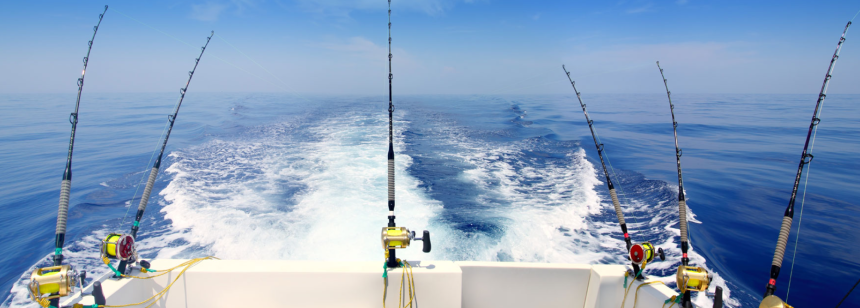If you’re planning a fishing trip, then you need to make sure that you have all the right gear. But more importantly, you need to know what you’re doing. Fishing can be a lot of fun, but it’s also a very challenging sport. If you’re not familiar with the basics, then you’re going to have a tough time catching anything. In this article, we will discuss some of the most important things that you need to know about fishing. We’ll talk about different types of bait, how to cast your line, and where to find fish. So if you’re ready to take your fishing skills to the next level, keep reading!
1) Choose a Fishing Spot Carefully
When it comes to fishing, one of the most important things to consider is where you’re going to fish. If you choose the wrong spot, then you’ll have a tough time catching anything. In the words of the people behind Hunting Terrain, when choosing a fishing spot, one of the most important things to consider is the type of water. There are three main types: fresh water, salt water, and brackish water. Fresh water can be divided into two categories: moving water and still water. Moving water includes rivers and streams, while still water includes lakes and ponds. Saltwater can be divided into two categories: inshore and offshore. Inshore saltwater refers to coastal areas such as bays and estuaries, while offshore saltwater refers to open ocean waters. Brackish water is a mixture of fresh and salt water. It can be found in estuaries and tidal marshes. In addition, it is also important to consider the time of year when choosing a fishing spot. Different types of fish are active at different times of the year, so you’ll need to do some research to find out when the best time to fish for a particular type of fish is.
2) Use the Right Bait
Once you’ve chosen a good spot to fish, the next step is to select the right bait. The type of bait you use will depend on the type of fish you’re trying to catch. For example, if you’re fishing for bass, then live bait such as worms or minnows is a good choice. If you’re fishing for trout, on the other hand, artificial lures such as spinners or flies are a better option. It’s also important to consider the size of the bait you’re using. The bait should be small enough to fit on the hook, but large enough to attract the fish.
3) Cast Your Line Properly
Casting your line is an important part of fishing, but it’s not as easy as it looks. If you don’t do it properly, then you’re not going to catch anything. When casting your line, be sure to use the proper technique. First, hold the rod in your dominant hand and the reel in your other hand. Then, position the tip of the rod behind you and to the side. Next, snap your wrist to cast the line forward. Be sure to release the line at the right moment to ensure accuracy.
4) Reel in the Fish Properly
Once you’ve finally caught a fish, it’s important to reel it in properly. If you don’t, then you could lose the fish or even break your line. To reel in a fish, first, make sure that the drag on your reel is set properly. The drag is the mechanism that controls how much resistance there is when you’re reeling in a fish. If it’s not set properly, then you could break your line. Second, use your dominant hand to hold the rod and your other hand to reel in the line. Be sure to reel slowly and steadily. If you try to reel in too quickly, then you could break the line or lose the fish.
5) Release the Fish Properly
After you’ve caught and reeled in a fish, it’s time to release it. Let’s face it, not all of us are going to keep every fish we catch. If you’re going to release the fish, it’s important to do so properly. First, wet your hands before handling the fish. This will help to avoid removing the fish’s protective slime coating. Second, support the fish’s body with one hand and remove the hook with the other. Finally, release the fish back into the water. Be sure to hold it upright in the water until it swims away.
6) Purchase Fishing Gear
Besides bait and a fishing rod, there are other items you’ll need to purchase before going on a fishing trip. These include a tackle box, landing net, and waders. A tackle box is used to store all of your fishing gear. It should be big enough to hold all of your supplies, but small enough to be portable. A landing net is used to help you land fish that are too big to be reeled in. Waders are a type of clothing that is worn to keep your feet and legs dry while fishing in the water.
Moreover, when considering the purchase of new fishing gear, avid anglers should not overlook the remarkable advancements in technology, such as the best fish finders 2023 has to offer, as they can significantly enhance their ability to locate and reel in the biggest and most elusive catches.
7) Get a Fishing License
Before you can start fishing, you need to obtain a fishing license. Fishing licenses are issued by state governments and are typically valid for one year. The cost of a fishing license varies from state to state but is usually around $20. You can purchase a fishing license at most sporting goods stores or online.
Fishing is a popular sport that can be enjoyed by people of all ages. To catch fish, you’ll need some basic knowledge and the right gear. You’ll also need to purchase a fishing license in most states. Once you have all of the necessary supplies, it’s time to find a good spot to fish. The best places to fish vary depending on the type of fish you’re trying to catch. Once you’ve found a good spot, it’s time to cast your line and start fishing! Hopefully, these tips will help you catch more fish on your next fishing trip. So, what are you waiting for? Get out there and start fishing!















